
Effective Hydrogen Sulfide (H₂S) Removal Techniques for Industrial Applications
Air Strippers and Wet Gas Scrubbers: Advanced Solutions for H₂S Abatement
Customised advise from one of our specialists.
Fill in the form below and we will contact you as soon as possible.
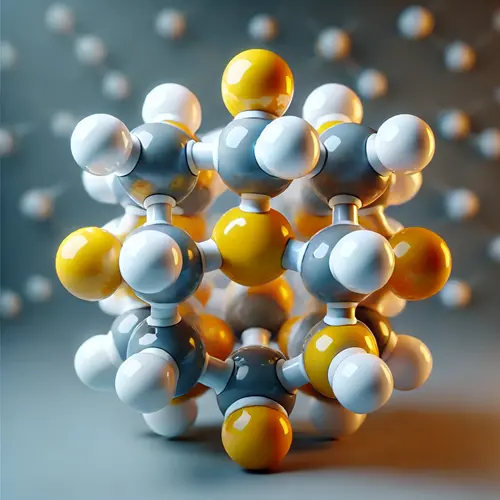
Hydrogen Sulfide (H₂S): Risks, Sources, and Effective Management
Understanding H₂S: Health Hazards, Industrial Risks, and Removal Solutions

Hydrogen sulfide (H₂S) is a highly toxic and corrosive gas with a distinct rotten egg odor. It is commonly found in wastewater treatment plants, natural gas processing, biogas production, and industrial facilities. H₂S forms during the decomposition of sulfur-containing organic materials, including proteins like cysteine and methionine.
Even at low concentrations, H₂S exposure poses significant health risks, leading to symptoms such as eye irritation, respiratory issues, and long-term neurological effects. Prolonged or high-level exposure can cause olfactory fatigue, making it difficult to detect the gas, increasing the danger of exposure.
H₂S Corrosion and Industrial Impact
Beyond its health risks, hydrogen sulfide is highly corrosive to metals, leading to damage in pipelines, storage tanks, and industrial equipment. This makes H₂S removal essential in industries such as oil & gas, wastewater treatment, and biogas purification.
Effective H₂S Removal Solutions
To safeguard industrial operations and protect workers, implementing effective H₂S removal solutions is crucial. Technologies such as:
- Wet gas scrubbers
- Activated carbon filtration
- Chemical scavengers
These technologies help eliminate hydrogen sulfide and prevent corrosion and toxic exposure.
Regulatory Compliance and Safety
For industries handling sour gas, biogas, or wastewater treatment, adopting H₂S mitigation strategies ensures:
- Regulatory compliance
- Worker safety
- Equipment longevity
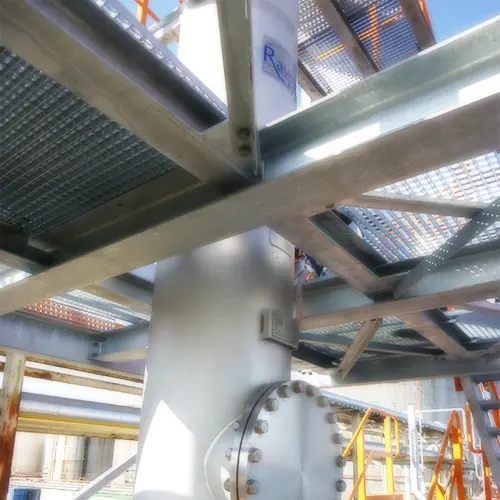
Air Strippers: Efficient Water Treatment for H₂S Removal
What is Air Stripping?

Air stripping is a process that removes undesirable substances from a liquid, typically water or wastewater, by bringing it into close contact with a gas, usually air. This method allows volatile chemicals to evaporate from the liquid phase into the gas phase, effectively separating contaminants.
How Air Strippers Remove Hydrogen Sulfide (H₂S)
Air strippers are widely used to remove hydrogen sulfide (H₂S) and other volatile contaminants from water. When water passes through the stripper, H₂S is transferred from the liquid to the air, where it is diluted to very low concentrations before being safely released into the atmosphere.
For higher concentrations of H₂S, vapor phase air treatment can be integrated to enhance efficiency in air stripping tower designs.
Packed Column Air Strippers: The Preferred Solution
Packed column air strippers are the most commonly used type due to their cost-effectiveness and high efficiency in treating large volumes of wastewater and heavily contaminated water sources.
- Operate at significantly lower pressure drops compared to other air stripper types.
- Require less energy, reducing operational costs.
- Designed for large-scale industrial applications in water purification.
How a Packed Column Air Stripper Works
The water treatment process in a packed column air stripper follows these steps:
- Water Intake: Water is pumped from the source to the top of the tower.
- Liquid Distribution: A specially designed liquid distributor ensures even flow.
- Packed Bed Flow: Water flows down through a packed bed by gravity, while a fan blows air upwards.
- Gas Transfer: H₂S moves from the contaminated water to the ascending air stream.
- Clean Water Collection: Treated water is collected at the bottom of the tower in the sump.
- Gas Release: The air, now carrying H₂S at low concentrations, exits through the top of the tower.
Optimized Packing Design for Maximum Efficiency
The packed bed is designed to maximize surface contact between water and air, ensuring efficient contaminant removal. A support plate at the bottom holds the packing in place while allowing unrestricted gas flow.
Why Use Air Strippers for H₂S Removal?
Air strippers provide a highly effective, energy-efficient solution for treating H₂S-contaminated water. Their ability to handle large volumes and operate with minimal pressure loss makes them ideal for industrial wastewater treatment.
Get in touch with us
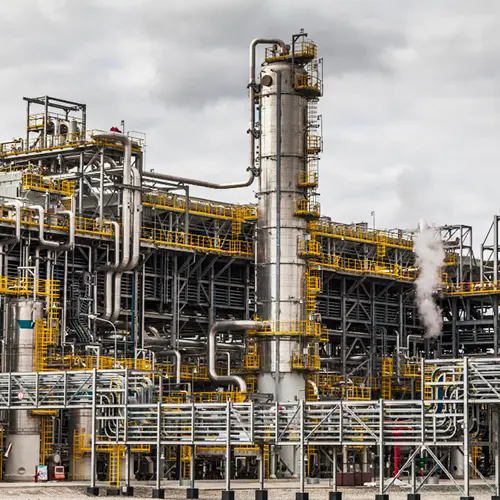
Wet Gas Scrubbers: Effective H₂S and Acid Gas Removal
What is Caustic Scrubbing?

Caustic scrubbing is a proven technology used for the removal of hydrogen sulfide (H₂S) and other acid gases in various industrial processes. It has been widely adopted due to its cost-effectiveness, improved design and control strategies, and the potential sales value of its byproduct, sodium bisulfide (NaHS).
Caustic Scrubbers for Biogas Purification
Caustic scrubbers are extensively used in biogas treatment to remove H₂S and improve gas quality. One key factor in biogas purification is the presence of CO₂, which affects the efficiency of the scrubbing process:
- Low or No CO₂: Traditional scrubbing uses recirculated caustic solutions in a packed or open-spray tower.
- High CO₂ Levels: Specialized designs prevent excess caustic consumption and unwanted sodium carbonate precipitation.
Advanced Caustic Scrubber Designs
Modern caustic scrubber systems have evolved to enhance H₂S removal efficiency. Some innovative designs include:
- Dual-Loop Systems: Separate high-strength and partially spent caustic recirculation loops for more effective contaminant removal.
- Selective CO₂ Slippage Designs: These allow H₂S removal while preventing excessive CO₂ absorption, similar to alkanolamine absorption processes.
- Sour Water Stripper Off-Gas Treatment: A combination of caustic scrubbing and steam stripping for ammonia (NH₃) removal.
Key Considerations for Caustic Scrubber Selection
When selecting the most suitable caustic scrubber design, the following factors should be evaluated:
- H₂S Removal Specifications: Required purity levels of treated gas.
- Total H₂S Load: The amount of sulfur to be removed (tons per day).
- Gas Composition: Presence of CO₂, ammonia, or other contaminants affecting scrubbing efficiency.
- Operational Frequency: How often the scrubber is used (continuous vs. batch operation).
- Spent Caustic Disposal: Options for selling, recycling, or safe disposal of NaHS byproduct.
- Economic Viability: The cost of caustic feed chemicals and operational expenses.
Caustic Scrubbing in Industrial Applications
Caustic scrubbers are widely implemented in various industries, including:
- Oil & Gas Refining: Removal of sour gas contaminants.
- Biogas and Landfill Gas Treatment: Purification for energy applications.
- Wastewater Treatment Plants: Controlling odorous gas emissions.
By leveraging the right caustic scrubbing technology, industries can ensure efficient H₂S removal, protect equipment from corrosion, and enhance environmental compliance.
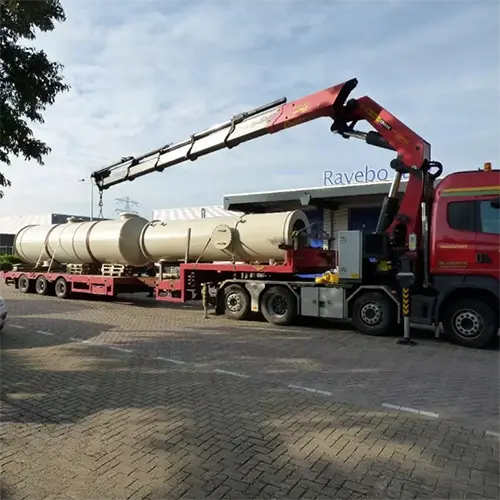
Caustic Scrubbing for H₂S Removal: Efficient Industrial Solutions
How Sodium Hydroxide (NaOH) Removes Hydrogen Sulfide (H₂S)

The scrubbing of hydrogen sulfide (H₂S) using sodium hydroxide (NaOH) is a well-established industrial process widely used for H₂S removal across multiple industries. This process is particularly effective in applications where small amounts of H₂S need to be treated.
H₂S Scavengers: Comparing Caustic Scrubbing with Other Methods
Because caustic scrubbers use a non-regenerable solvent, they are primarily used for low-volume H₂S removal, a process often referred to as scavenging. Other common H₂S scavengers include:
- Solid Reactive Absorbents: Such as iron oxides, which chemically bind to H₂S.
- Reactive Liquid Absorbents: Other liquid-phase solutions used for H₂S removal.
Scavengers are commonly used for the removal of H₂S in amounts of approximately 0.1 ton per day or less. However, when caustic scrubbing is performed at a moderate pH, it produces sodium bisulfide (NaHS), also known as NaSH. High-quality NaHS can often be sold as a valuable byproduct.
Key Factors in Caustic Scrubber Selection
Choosing the right caustic scrubber configuration for H₂S removal depends on several key factors:
1. H₂S Abatement Requirements
The level of H₂S removal required in the treated gas determines the scrubber design. More stringent regulations may require:
- Multiple treatment stages for maximum H₂S removal efficiency.
- Fresh high pH caustic contact at the top of the system.
- Adjustments based on operating temperature and pressure.
2. Amount of H₂S to be Removed (Tons per Day)
The amount of H₂S to be scrubbed plays a crucial role in determining the best removal method:
- Less than 0.1 ton/day: Scavengers such as iron oxides or caustic scrubbers are typically used.
- 0.2 - 15 ton/day: Regenerable processes such as liquid redox and biological or chemical treatments are more efficient.
- 15+ ton/day: Large-scale solutions such as amine, Claus, and tail gas treatment units are required.
Industrial Applications of Caustic Scrubbers
Caustic scrubbers are widely used across industries that require efficient and reliable H₂S removal, including:
- Oil & Gas: Treatment of sour gas and refinery off-gases.
- Biogas Production: Scrubbing H₂S from renewable gas streams.
- Wastewater Treatment: Eliminating odorous H₂S emissions.
Game-changing benefits
Discover the game-changing benefits of scrubbers and propel your business forward with our free whitepaper download.
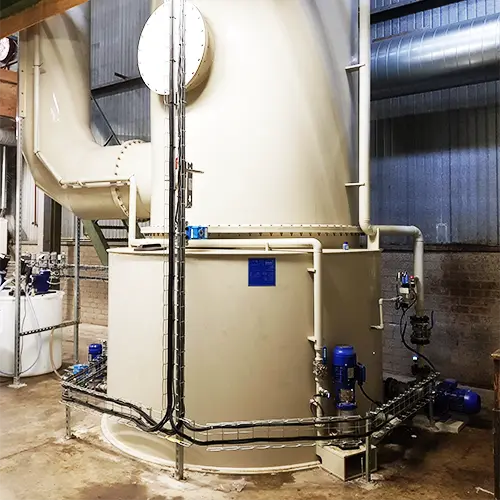
Caustic Scrubbers: Managing H₂S, CO₂, and Other Gas Contaminants
Understanding Gas Components in Caustic Scrubbing

In industrial gas treatment, multiple contaminants can interact with caustic scrubbing solutions. While the primary target is often hydrogen sulfide (H₂S), other gases such as carbon dioxide (CO₂), ammonia (NH₃), and organic sulfur compounds can also be absorbed. The efficiency of a caustic scrubber depends on the chemical behavior of these gases and how they interact with the scrubbing system.
Effects of CO₂ in Caustic Scrubbing
The presence of CO₂ in the feed gas can impact scrubbing efficiency in several ways:
- Increased Caustic Consumption: CO₂ reacts with sodium hydroxide (NaOH), leading to unnecessary usage.
- Salt Precipitation: CO₂ can form sodium carbonate (Na₂CO₃), which may solidify and cause system fouling.
- Selective H₂S Removal: Scrubber designs can be optimized to remove H₂S while allowing CO₂ to pass through, utilizing CO₂’s slower absorption rate in caustic solutions.
Managing Ammonia (NH₃) in Caustic Scrubbers
If ammonia (NH₃) is present in the gas stream, it may also be absorbed into the liquid phase. However, due to the high pH levels in caustic scrubbers, ammonia absorption is limited. Proper system adjustments may be required to handle NH₃ effectively.
Other Contaminants: Organic Sulfur and Aromatic Compounds
Organic sulfur compounds and aromatic hydrocarbons may also be absorbed into the caustic solution. If the spent caustic (NaHS) is intended for sale or reuse, the presence of these contaminants must be carefully evaluated. High-quality NaHS production requires minimal impurity levels.
Designing Caustic Scrubbers for Different Industrial Applications
Caustic scrubbers are widely used for the removal of H₂S from sour gas streams in refineries, including:
- Fuel gas treatment
- Sour water stripper gas processing
- Off-gas handling with high CO₂ content
The final scrubber design is influenced by various factors, including:
- H₂S treatment specifications (required purity of treated gas)
- Total sulfur removal capacity (measured in tons/day)
- Disposition of spent caustic (e.g., sale, disposal, or blending)
- Gas composition (presence of CO₂, NH₃, or other contaminants)
- Operating temperature and pressure
Evaluating Caustic Scrubbing Viability
To determine the feasibility of caustic scrubbing for H₂S removal, industries must conduct preliminary performance and economic analyses. This evaluation helps identify the optimal scrubbing process flow to maximize efficiency while minimizing costs.
Conclusion
Caustic scrubbers offer a flexible and effective solution for removing H₂S and other gas contaminants. Proper system design ensures cost efficiency, reduced chemical consumption, and high-purity gas treatment. By optimizing scrubber configurations, industries can achieve effective gas purification while maintaining process stability and environmental compliance.
Get in touch with our scrubber specialist
Our gas scrubbers with analyzing systems make it possible to clean various gas flows. This leads to a cleaner living environment and more sustainable production processes. Curious about the possibilities? Our specialists are happy to provide you with appropriate advice.
